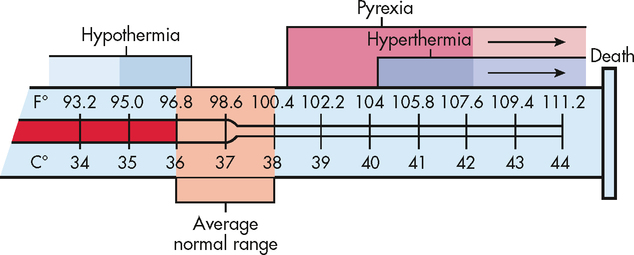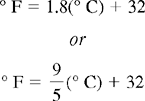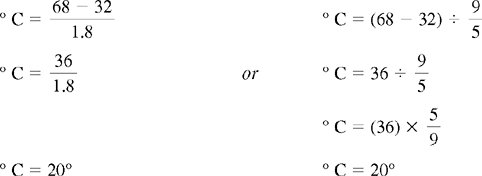CHAPTER 9 After reviewing this chapter, you should be able to: 1. Convert between Celsius and Fahrenheit temperature 2. Convert between units of length: inches, centimeters, and millimeters 3. Convert between units of weight: pounds and kilograms, pounds and ounces to kilograms 4. Convert between traditional and military (international) time The differences between Fahrenheit and Celsius in relation to the freezing and boiling points led to the development of appropriate conversion formulas. Figure 9-1 shows two thermometers reflecting the relationship of pertinent values between the two scales. Figure 9-2 shows medically important Celsius and Fahrenheit temperature ranges.
Additional Conversions Useful in the Health Care Setting
CONVERTING BETWEEN CELSIUS AND FAHRENHEIT
Differentiating Between Celsius and Fahrenheit
Examples:









 Practice Problems
Practice Problems



